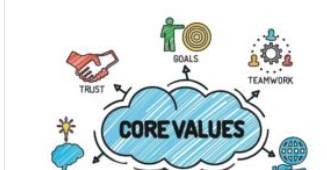Task Lists Are Not Enough – Identify, Prioritization, Diligence, & Accountability
I don’t know how you feel about the current state of things in our world, but for me, I’ve got a lot going on. Like, a ton of things. I’m hearing similar feedback from others in my field and from professionals in numerous other industries. 2020 was the “hold my beer” of unprecedented change, and 2021 is shaping up to be a remarkably similar operating environment.
Yes, we know stuff happens. All day, every day. At home, at work, and at work from home. “If you’re not changing/evolving/moving forward, you’re: insert downside statement here:”, yeah, we’ve heard all of the variations of that one. But let us be honest, this all feels extremely different. Proactive, planned change is not the same as the current trend of reactive, “rebuild the plane while we’re flying it” change. So, what is an organization to do?
Identify the Target(s) & Define The Actions:
The all-encompassing “let’s fix stuff!” statement, while no doubt well-intentioned, can seriously hinder your teams’ ability to execute real and lasting change and improvement. What needs to be fixed, and according to whom? Understanding where you need to focus your time and energy while looking at dozens of opportunities is critical right now. Pick your battles carefully, get buy-in an alignment from your team on the chosen tasks and initiatives, and clearly communicate what is going to happen.

Prioritization Drives Focus
Change management doesn’t operate in a vacuum. We all have our day jobs, the critical core competencies and tasks that must be completed to serve our internal partners and our clients. What does that mean? In terms of change management, it means that we’re carving time out of what we’ve already committed to do each day to in order to improve how we do things, and the quality of our outputs. Figure out what is most important, and get all eyes, hearts, and minds focused on the prize.
And I am most definitely not saying that you can only work on one thing at a time. Not at all. What I am saying though is that you can most definitely have problems getting traction or maintaining momentum when you’re trying to do too much at once, or if the focus and energy is constantly being realigned to non-prioritized tasks and initiatives. Which leads to our next item…
Be Diligent and Protect Your Priorities – Learning to Say “No”, Or At Least, “Maybe Later”
This is a tough one. Yes, life gives you lemons, but if you’re already knee-deep in a vat of grapes in your team’s efforts to craft a fine wine, is now really the time to pull everyone out of that process in order to make some lemonade? If the risk to the business is lower than then the risk of not getting your top priorities completed, put the lemons aside for a bit and finish the task at hand. And when I say “put the lemons aside”, what I’m saying is to capture the details of the issue, add it to your tracking list, and figure out where it’s going to fall when you’ve circled back to your task prioritization process. If it was urgent enough to potentially side-track a high-priority initiative, it needs to be documented and addressed when resources become available to focus on it.
Assuming Nothing When It Comes to Accountability
What specifically must be done, by whom, and by when? How do you track progress against tasks that may take weeks, or months, to complete? Is there a specific task order or dependencies within the project that everyone needs to understand? How is the progress being communicated to the team? Does everyone have the clarity needed to do what needs to be done? Do they have the tools, knowledge, and skills to effectively execute? Do they have the time, and if not, what needs to happen to assist them with finding the necessary time?
Lots of questions, but all of them, and perhaps a dozen others, need to be clearly answered and documented to establish the foundations of accountability and ownership necessary to get things done. If you don’t have a full-time project manager in your organization, you’re still going to have to find a way to approach the task in a manner that utilizes fundamental project management best practices and principles. What is the goal, what is the path, what must happen, who is going to get it done, when will the assigned tasks be completed, and how will the changes be validated and firmly embedded in the operation going forward?
Clarity is critical, and the ability to stay focused in today’s operating environment is in my opinion the most important skill that leaders and organizations need right now. Things are happening, and will continue to happen, that have incredible potential to distract us from the most important tasks at hand, but if we can keep ourselves and our teams focused, we’ll create the “wins” we all need that come from getting the most important ones completed.
















